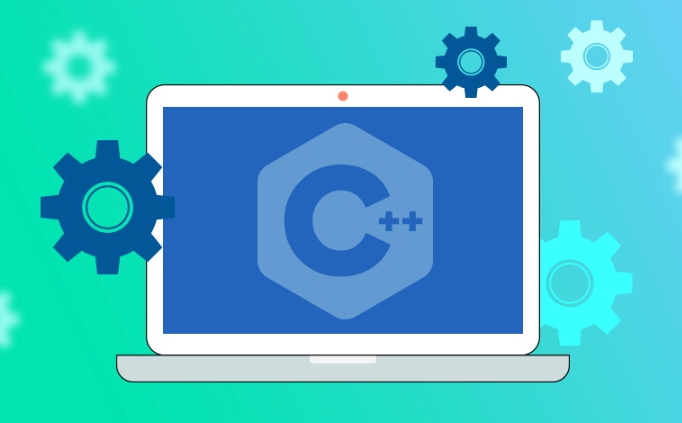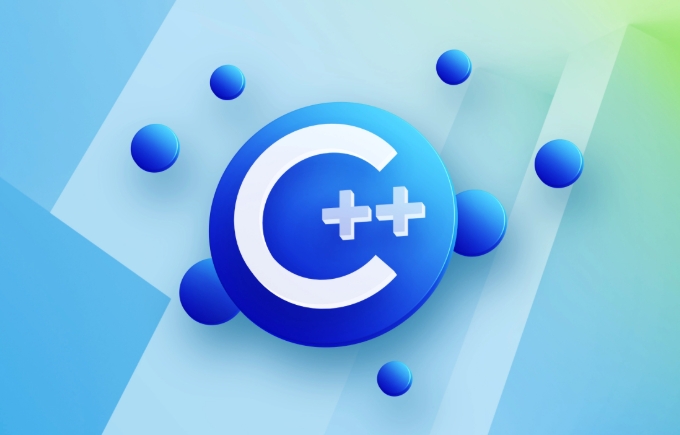Creating and using libraries in C is for code reuse and modular development. 1. To create a static library, you need to write the source code and compile it into a target file, and then package it into a .a or .lib file, and you can link it when using it; 2. To create a dynamic library, you need to compile it into location-independent code, and then generate .so or .dll files, and load it at runtime; 3. When using the library, you need to ensure that the header file matches the library version, avoid mixing static and dynamic libraries, and troubleshoot link errors through tools; 4. It is recommended to install third-party libraries through the package manager to reduce configuration problems; in summary, the core lies in standardizing interfaces, correct compilation and reasonable references.

Creating and using libraries in C is mainly for code reuse and modular development. You can encapsulate common functions, classes, or logic into a library for multiple projects to call. This process includes writing the library's source code, compiling and generating the library file, and calling it in other projects.

Create a Static Library
A static library is a type of library file that is linked to a program at compile time, usually ending with .a (Linux) or .lib (Windows). The advantage of using static libraries is that the end executable does not depend on external library files.
Operation steps:

- Write your function code, such as
math_utils.cppand the corresponding header filemath_utils.h - Compile into the target file:
g -c math_utils.cpp -o math_utils.o - Package into static library:
ar rcs libmathutils.a math_utils.o
After that, when using it in other projects, you only need to include the header file and link the library:
g main.cpp -L. -lmathutils -o main
Create a dynamic library (Shared Library)
Dynamic libraries are loaded at runtime and usually end with .so (Linux) or .dll (Windows). It saves disk space and allows the library to be updated without having to recompile the entire program.

The creation method is as follows:
- Write code and compile into position-independent code (PIC):
g -fPIC -c math_utils.cpp -o math_utils.o - Generate shared library:
g -shared -o libmathutils.so math_utils.o
The header file is also required when using it, and the library path is specified during compilation:
g main.cpp -L. -lmathutils -o main ./main
Note: LD_LIBRARY_PATH may be required to include the current directory or other custom library paths at runtime.
Things to note when using the library
When you use libraries provided by others or libraries written by yourself, there are a few things that are easy to ignore but are important:
- The header file must match the library version, otherwise there may be problems such as symbol failure or abnormal behavior.
- Static libraries and dynamic libraries cannot link libraries with the same name at the same time. You must clearly choose a method.
- Under Linux, you can use
nmorobjdumpto view symbol information in the library to help debug link errors - If you are using a third-party library, it is best to install it through a package manager (such as apt or vcpkg) to avoid the hassle of manual configuration
For example, if you encounter an undefined reference error, it is likely that there is no correct link library or the function declaration is wrong.
Let's summarize
The core of creating and using C libraries is to write interface header files, compile and package correctly, and reference them reasonably in the project. Whether it is a static or dynamic library, the key is to keep the structure clear and the version consistent. Basically all this is it. Although it seems simple, it is easy to get stuck in actual projects due to paths, dependencies and other problems, so the details must be handled carefully.
The above is the detailed content of How to create and use a library in C ?. For more information, please follow other related articles on the PHP Chinese website!

Hot AI Tools

Undress AI Tool
Undress images for free

Undresser.AI Undress
AI-powered app for creating realistic nude photos

AI Clothes Remover
Online AI tool for removing clothes from photos.

Clothoff.io
AI clothes remover

Video Face Swap
Swap faces in any video effortlessly with our completely free AI face swap tool!

Hot Article

Hot Tools

Notepad++7.3.1
Easy-to-use and free code editor

SublimeText3 Chinese version
Chinese version, very easy to use

Zend Studio 13.0.1
Powerful PHP integrated development environment

Dreamweaver CS6
Visual web development tools

SublimeText3 Mac version
God-level code editing software (SublimeText3)
 Using std::chrono in C
Jul 15, 2025 am 01:30 AM
Using std::chrono in C
Jul 15, 2025 am 01:30 AM
std::chrono is used in C to process time, including obtaining the current time, measuring execution time, operation time point and duration, and formatting analysis time. 1. Use std::chrono::system_clock::now() to obtain the current time, which can be converted into a readable string, but the system clock may not be monotonous; 2. Use std::chrono::steady_clock to measure the execution time to ensure monotony, and convert it into milliseconds, seconds and other units through duration_cast; 3. Time point (time_point) and duration (duration) can be interoperable, but attention should be paid to unit compatibility and clock epoch (epoch)
 How to get a stack trace in C ?
Jul 07, 2025 am 01:41 AM
How to get a stack trace in C ?
Jul 07, 2025 am 01:41 AM
There are mainly the following methods to obtain stack traces in C: 1. Use backtrace and backtrace_symbols functions on Linux platform. By including obtaining the call stack and printing symbol information, the -rdynamic parameter needs to be added when compiling; 2. Use CaptureStackBackTrace function on Windows platform, and you need to link DbgHelp.lib and rely on PDB file to parse the function name; 3. Use third-party libraries such as GoogleBreakpad or Boost.Stacktrace to cross-platform and simplify stack capture operations; 4. In exception handling, combine the above methods to automatically output stack information in catch blocks
 What is a POD (Plain Old Data) type in C ?
Jul 12, 2025 am 02:15 AM
What is a POD (Plain Old Data) type in C ?
Jul 12, 2025 am 02:15 AM
In C, the POD (PlainOldData) type refers to a type with a simple structure and compatible with C language data processing. It needs to meet two conditions: it has ordinary copy semantics, which can be copied by memcpy; it has a standard layout and the memory structure is predictable. Specific requirements include: all non-static members are public, no user-defined constructors or destructors, no virtual functions or base classes, and all non-static members themselves are PODs. For example structPoint{intx;inty;} is POD. Its uses include binary I/O, C interoperability, performance optimization, etc. You can check whether the type is POD through std::is_pod, but it is recommended to use std::is_trivia after C 11.
 How to call Python from C ?
Jul 08, 2025 am 12:40 AM
How to call Python from C ?
Jul 08, 2025 am 12:40 AM
To call Python code in C, you must first initialize the interpreter, and then you can achieve interaction by executing strings, files, or calling specific functions. 1. Initialize the interpreter with Py_Initialize() and close it with Py_Finalize(); 2. Execute string code or PyRun_SimpleFile with PyRun_SimpleFile; 3. Import modules through PyImport_ImportModule, get the function through PyObject_GetAttrString, construct parameters of Py_BuildValue, call the function and process return
 What is function hiding in C ?
Jul 05, 2025 am 01:44 AM
What is function hiding in C ?
Jul 05, 2025 am 01:44 AM
FunctionhidinginC occurswhenaderivedclassdefinesafunctionwiththesamenameasabaseclassfunction,makingthebaseversioninaccessiblethroughthederivedclass.Thishappenswhenthebasefunctionisn’tvirtualorsignaturesdon’tmatchforoverriding,andnousingdeclarationis
 How to pass a function as a parameter in C ?
Jul 12, 2025 am 01:34 AM
How to pass a function as a parameter in C ?
Jul 12, 2025 am 01:34 AM
In C, there are three main ways to pass functions as parameters: using function pointers, std::function and Lambda expressions, and template generics. 1. Function pointers are the most basic method, suitable for simple scenarios or C interface compatible, but poor readability; 2. Std::function combined with Lambda expressions is a recommended method in modern C, supporting a variety of callable objects and being type-safe; 3. Template generic methods are the most flexible, suitable for library code or general logic, but may increase the compilation time and code volume. Lambdas that capture the context must be passed through std::function or template and cannot be converted directly into function pointers.
 What is a null pointer in C ?
Jul 09, 2025 am 02:38 AM
What is a null pointer in C ?
Jul 09, 2025 am 02:38 AM
AnullpointerinC isaspecialvalueindicatingthatapointerdoesnotpointtoanyvalidmemorylocation,anditisusedtosafelymanageandcheckpointersbeforedereferencing.1.BeforeC 11,0orNULLwasused,butnownullptrispreferredforclarityandtypesafety.2.Usingnullpointershe
 How does std::move work in C ?
Jul 07, 2025 am 01:27 AM
How does std::move work in C ?
Jul 07, 2025 am 01:27 AM
std::move does not actually move anything, it just converts the object to an rvalue reference, telling the compiler that the object can be used for a move operation. For example, when string assignment, if the class supports moving semantics, the target object can take over the source object resource without copying. Should be used in scenarios where resources need to be transferred and performance-sensitive, such as returning local objects, inserting containers, or exchanging ownership. However, it should not be abused, because it will degenerate into a copy without a moving structure, and the original object status is not specified after the movement. Appropriate use when passing or returning an object can avoid unnecessary copies, but if the function returns a local variable, RVO optimization may already occur, adding std::move may affect the optimization. Prone to errors include misuse on objects that still need to be used, unnecessary movements, and non-movable types






